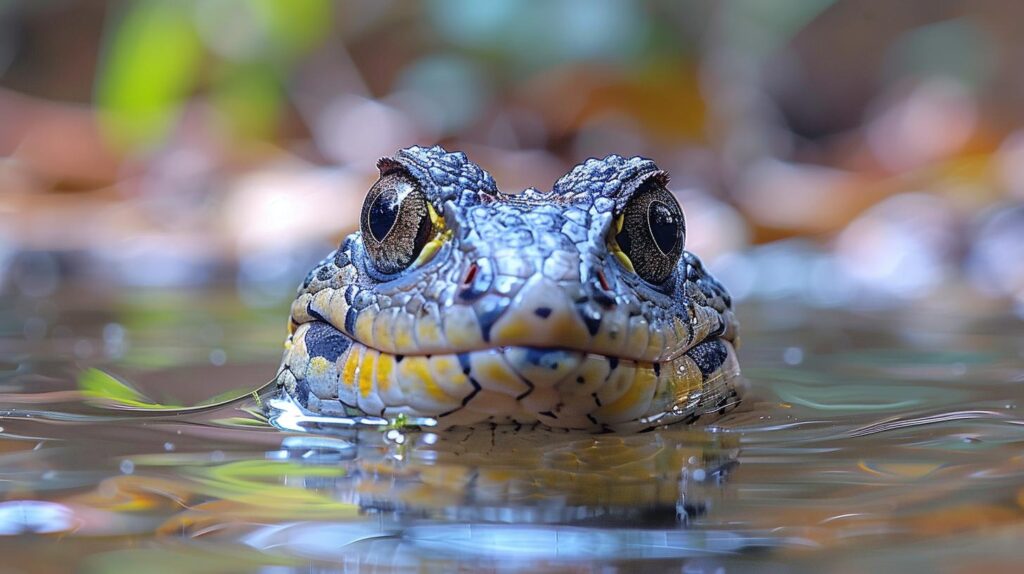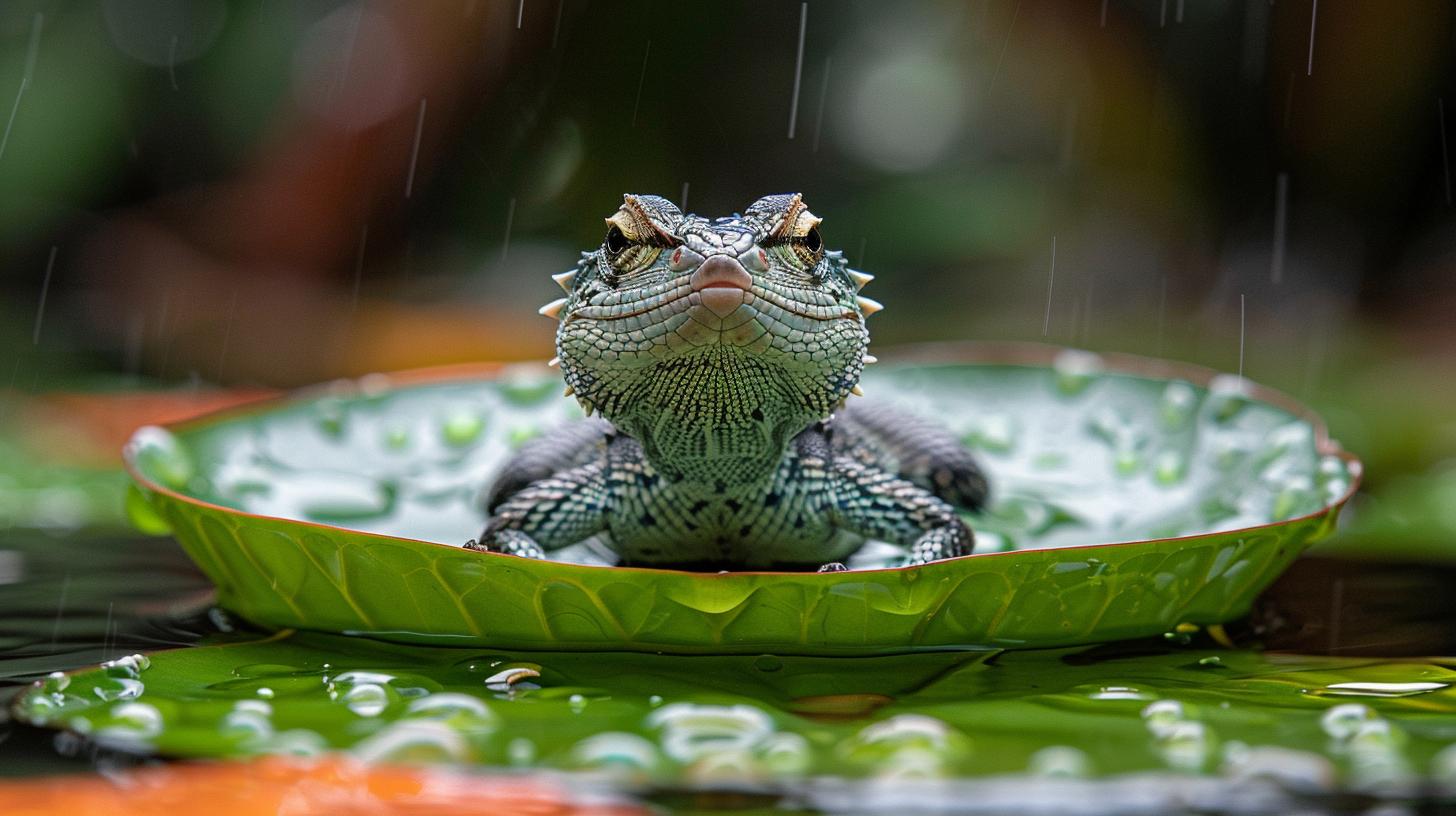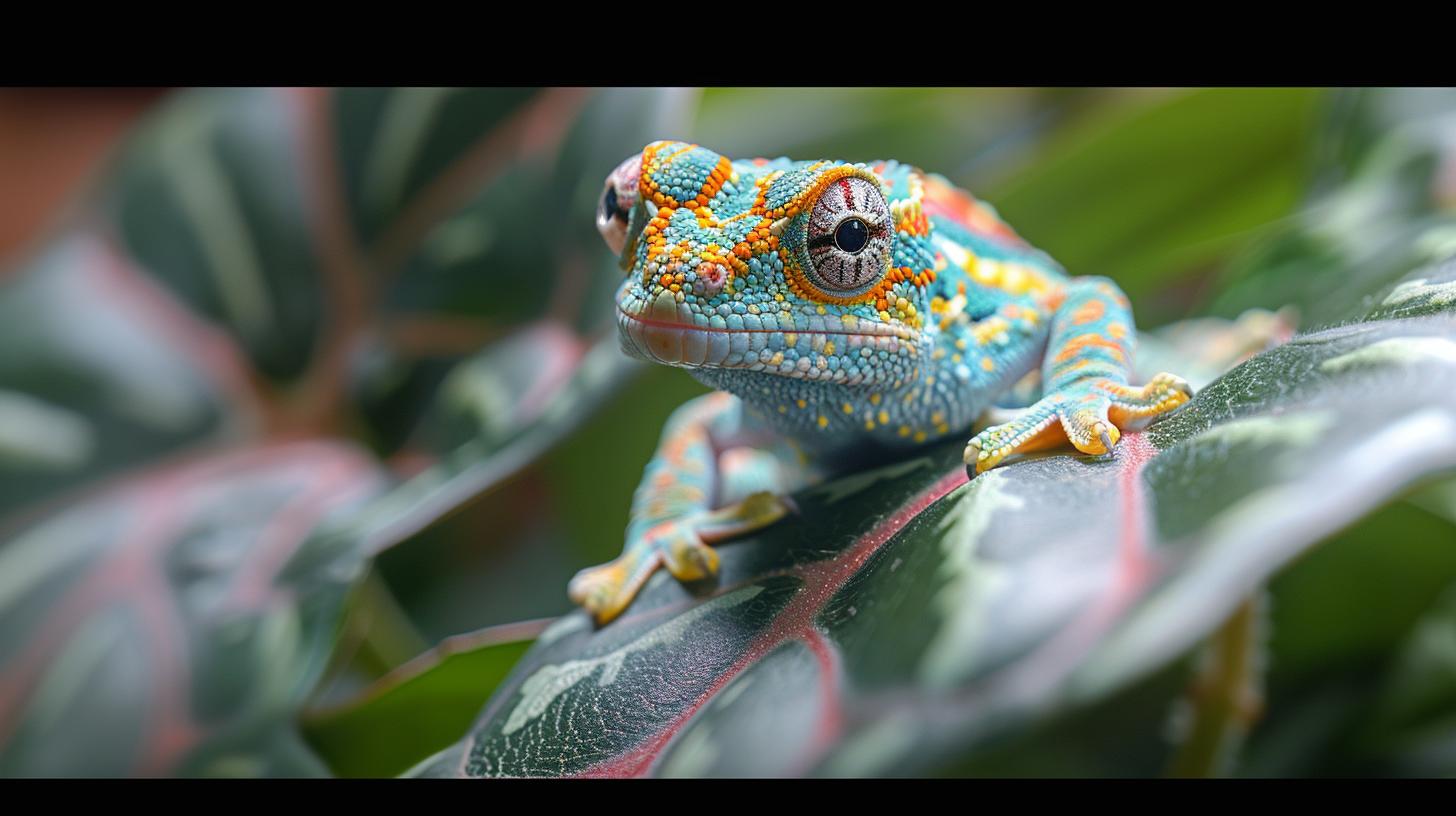Why Is Regular Reptile Tank Maintenance Crucial?

- Understanding the Essentials of a Healthy Reptile Habitat
- The Impact of Neglect on Reptile Health
- Reptile Tank Maintenance an Overview
- Tools and Supplies for Effective Tank Management
- Common Mistakes in Reptile Tank Maintenance
- The Role of Diet and Nutrition in Tank Cleanliness
- Steps Toward a Thriving Reptile Environment
- Frequently Asked Questions
Understanding the Essentials of a Healthy Reptile Habitat
Creating a home for your reptilian pet that reflects their natural habitat is not just a matter of aesthetics; it's a crucial part of ensuring their health and longevity. Understanding the essentials of reptile tank maintenance goes far beyond keeping the enclosure clean.
It includes replicating the ideal conditions these animals would experience in the wild-ranging from precise temperature regulation, adequate humidity levels, to maintaining overall cleanliness. These factors are fundamental in fostering an environment where your reptile can thrive rather than merely survive.
Delving into what makes a healthy reptile habitat, we begin by acknowledging that different species require varied conditions to flourish. The tropical rainforest demands vastly different environmental parameters than the arid desert, emphasizing the importance of research and customization in tank setup.
By closely simulating a reptile's natural surroundings, owners can significantly reduce stress-induced behaviors and promote healthy immune systems among their scaled companions. This approach necessitates a deep understanding of your pet's specific needs when it comes to lighting, temperature gradients, and humidity levels-to name just a few.
The impact of neglecting proper reptile tank maintenance cannot be understated. An unkempt enclosure becomes a breeding ground for harmful pathogens and parasites, which can lead to serious health issues like fungal infections or respiratory problems. Furthermore, an improperly maintained environment can lead to behavioral issues as stressed reptiles often exhibit signs of aggression or refusal to eat.
Such complications provide clear evidence of the direct link between environmental quality and the physical as well as mental well-being of captive reptiles. Through diligent attention to hygiene, monitoring environmental parameters, and regular engagement with these fascinating pets, owners can significantly contribute to creating habitats that are not only safe but also enriching for their reptilian family members.
The Impact of Neglect on Reptile Health
Understanding the risks of negligence towards reptile tank maintenance isn't just crucial; it's essential for the overall health and well-being of reptilian pets. Reptiles, by their very nature, are often resilient creatures adapted to survive in diverse environments.
However, within the constraints of captivity, they rely entirely on their human caretakers to recreate a habitat that mirrors their natural surroundings as closely as possible. This replication is crucial not only for physical health but also for psychological well-being.
Neglecting the upholding of an appropriate living environment through regular reptile tank maintenance can have dire consequences. Unlike in the wild, where reptiles can roam freely to source what they need or escape unfavorable conditions, captive reptiles are limited by the boundaries of their enclosures. Thus, it becomes imperative to understand how neglect directly impacts their health and what changes you may notice as signs indicating their distress or discomfort.
Rapid Accumulation of Harmful Bacteria
One significant effect of inconsistent tank maintenance is the swift accumulation of harmful bacteria within the enclosure. These bacteria thrive in environments rich in waste products and decaying organic matter-conditions that become rapidly prevalent without regular cleaning and disinfection routines. Over time, this buildup not only contaminates water sources but also air quality within the tank, leading to various health issues like respiratory infections or sepsis.
Development of Fungal Infections
Similarly, a lack of stringent cleanliness contributes to moist and dirty substrates becoming breeding grounds for fungal growths. These fungi pose another severe risk to reptilian health as they can cause skin infections or more grave systemic fungal diseases. Reptiles with compromised immune systems - often a result from stress due to improper care - are particularly susceptible to these ailments.
Stress-Induced Behaviors in Reptiles
Aside from physical ailments, neglect in maintaining optimal habitat conditions induces stress-related behaviors in reptiles. These behaviors might include excessive hiding, refusal to eat, or even aggressive reactions when interacted with-a sharp departure from their usual demeanor. Stress weakens immune defenses further and could precipitate other illnesses that might not have otherwise affected a healthy animal living under ideal conditions.
Continual reptile tank maintenance is thus not only about cleanliness but also about safeguarding your reptilian companion from avoidable health issues and behavioral problems. It requires dedication and understanding-from temperature regulation to controlling humidity levels-all aimed at mimicking an environment as close to their natural habitat as possible.
Reptile Tank Maintenance an Overview
Maintaining a healthy environment for reptiles is not just about providing them with food and a place to live. It encompasses a series of meticulous steps designed to replicate their natural habitat as closely as possible, ensuring their physical and psychological well-being. This includes precise temperature regulation, appropriate humidity levels, and above all, cleanliness.
A clean tank is fundamental to preventing infections and promoting the overall health of these sensitive creatures. The introduction of reptile tank maintenance into this conversation is not just another task on the checklist but a pivotal aspect of holistic reptile care that mirrors their conditions in the wild.
Understanding that reptiles are often far removed from their natural settings when kept as pets, it becomes our responsibility to mimic those environments accurately within our homes. This process requires insight into the species-specific needs of each reptile, but there are universal principles applicable across the board, which are critical in establishing a thriving habitat for your scaly friends.
Regular maintenance routines not only offer a window into your pet's well-being but also preemptively address environmental discrepancies that could lead to stress or disease.
Why Regular Cleaning Is Non-Negotiable
A cornerstone of reptile tank maintenance is regular cleaning and disinfection. Over time, detritus accumulates within the tank-sheddings, uneaten food, and fecal matter can quickly become breeding grounds for harmful bacteria and fungi if not addressed timely. Implementing a consistent cleaning schedule prevents these potential hazards from compromising your reptile's health. Moreover, a clean tank is less likely to attract pests such as mites or flies that can be detrimental to both pet and owner.

The Role of Monitoring Devices in Reptile Wellbeing
Equally important is the ongoing monitoring of humidity and temperature within the reptile enclosure. These parameters can fluctuate due to various external factors such as seasonal changes or indoor heating systems.
Utilizing reliable thermometers and hygrometers allows owners to stay ahead of these shifts, tweaking conditions back to optimal ranges before any stress-induced behaviors emerge in their pets. Such proactive adjustments circumvent discomfort and stave off related health issues like respiratory infections or shedding problems-an integral toolbox for astute reptile tank maintenance
Lastly, while cleanliness is non-negotiable, how one achieves it during tank maintenance bears significant implications for reptilian inhabitants. The use of harsh chemicals may eradicate germs but inadvertently introduce toxins into your pet's environment-a risk not worth taking. Therefore, selecting suitable natural cleaning agents becomes paramount in safeguarding your reptile's habitat against chemical exposure while effectively maintaining hygiene standards within their tanks.
Through understanding these foundational elements-and executing them with diligence-pet owners can ensure that their approach towards reptile tank maintenance enhances both the longevity and quality of life for their beloved cold-blooded companions.
Tools and Supplies for Effective Tank Management
A successful approach to reptile tank maintenance hinges on having the right tools and supplies at your disposal. Without them, ensuring a safe, clean, and healthy environment for your reptiles can be a challenging task. This section aims to detail essential items every reptile owner should have in their maintenance kit, designed to streamline the process and guarantee the well-being of your scaled friends.
Firstly, it's imperative to have a reliable substrate cleaner. The substrate is the bedding or ground cover in the reptile tank, and it plays a crucial role in maintaining proper hygiene. Accumulated waste can lead to harmful levels of ammonia and bacteria, which are detrimental to your pet's health. A good substrate cleaner will help remove waste efficiently without disrupting the necessary microfauna that contribute to a balanced ecosystem within the tank.
In addition to physical cleaning tools, accurate monitoring equipment such as hygrometers and thermometers are vital. Keeping tabs on humidity and temperature levels is critical since most reptiles require specific conditions to thrive. Fluctuations outside their comfortable range can stress your pets, leading to weakened immune systems and increased susceptibility to diseases. By diligently monitoring these environmental parameters with hygrometers and thermometers, you ensure that your reptile lives in an optimal setting aligned with its natural habitat.
Lastly, incorporating natural cleaning agents into your toolkit can make a significant difference in maintaining tank cleanliness while safeguarding your reptile's health. Harsh chemicals pose risks not only to the delicate respiratory systems of many reptiles but also disrupt the balance of their enclosures. Opting for vinegar solutions or citrus-based cleaners offers an effective alternative for disinfecting surfaces without introducing toxic substances into your pet's environment.
- Substrate cleaner
- Hygrometer
- Thermometer
- Natural cleaning agents
Armed with these essential tools and supplies, you're better equipped to perform routine reptile tank maintenance, ensuring that each task contributes positively toward creating a sustainable and healthy habitat for your pets. Remember that regular attention not only prevents disease but also fosters an enriching environment in which your reptiles can exhibit natural behaviors comfortably.
Moving forward from establishing a foundation in proper tool selection, further consideration should focus on avoiding common mistakes during maintenance processes. Not all practices considered beneficial are indeed favorable for every species of reptile; hence understanding tailored needs becomes indispensable in promoting overall health and longevity within captive environments.
Common Mistakes in Reptile Tank Maintenance
A critical aspect of *reptile tank maintenance* involves steering clear of common errors that could compromise the health and safety of your reptilian pets. These mistakes, while seemingly innocuous, can have far-reaching effects on the tank's environment and, by extension, on the reptiles themselves. Understanding these missteps is essential for both novice and experienced reptile owners alike.
Firstly, a frequent oversight in *reptile tank maintenance* is neglecting to regularly replace the water within the tank. Clean water is vital not just for drinking but also for maintaining the correct humidity levels. When water becomes stale or contaminated, it can become a breeding ground for bacteria and parasites, posing a significant health risk to the reptiles.
Additionally, inappropriate substrate choices can lead to impaction or foster bacterial growth. While substrates like sand or gravel might look appealing, they may not be ideal for all types of reptiles and could cause more harm than good if not selected carefully.
Another error comes from misunderstanding or ignoring specific lighting requirements. Different species of reptiles have varied needs when it comes to UVB light exposure, necessary for Vitamin D synthesis and overall wellbeing. Using incorrect lighting or placing tanks in inappropriate locations can result in Vitamin D deficiencies, negatively impacting bone health among other issues.
| Mistake | Consequences |
|---|---|
| Neglecting Water Changes | Risk of bacterial/parasite infection |
| Incorrect Substrate Use | Potential Impaction, Bacterial Growth |
| Inadequate Lighting | Vitamin D Deficiency, Poor Bone Health |
In handling these challenges related to *reptile tank maintenance*, the key lies in continuous education and adjustment based on specific species' needs. Investing time into understanding each unique requirement-be it diet adjustments to minimize waste output or selecting appropriate tank mates to prevent stress-is necessary to avoid these common yet avoidable mistakes.

Navigating through these issues requires a proactive approach towards *reptile tank maintenance*. The next steps involve learning how to optimize each facet of care-ranging from efficient cleaning techniques that safeguard against harmful chemicals to recognizing signs that indicate distress or illness in your pet caused by poor habitat conditions. This holistic understanding will guide you toward creating a more enriching living space for your reptilian companions without inadvertently introducing new risks into their environment.
The Role of Diet and Nutrition in Tank Cleanliness
Understanding the pivotal role of diet and nutrition in ensuring a clean and healthy reptile tank is often overlooked by even the most well-intentioned reptile owners. A key aspect of reptile tank maintenance involves not just the physical cleaning and environmental adjustments but also managing what goes into your reptile's system. The connection between what a reptile eats and the condition of its habitat can't be overstated.
Firstly, it's important to align a reptile's diet as closely as possible with what it would naturally consume in the wild. This does not only contribute to their overall health but also impacts the cleanliness of their environment. For example, feeding your reptile an inappropriate diet can lead to excess waste, unpleasant odors, or even more serious health issues that could affect tank hygiene. High-quality, species-appropriate food minimizes unnecessary waste and helps keep the habitat cleaner.
- High-fiber diets, especially for herbivorous reptiles, aid in digestion and produce less smelly waste.
- Properly sized food items ensure that food is fully consumed, reducing leftovers that can decay and pollute the tank.
- Supplements like calcium should be administered as needed to avoid over-supplementation, which can lead to health problems manifesting as dirty tank conditions due to unusual excretions or undigested food particles.
Another critical aspect concerns water quality within the tank. Reptiles like turtles require clean water for swimming and hydration but are known to contaminate their water quickly. Ensuring they are fed a balanced diet helps reduce the frequency with which water becomes dirty and requires changing. Regular monitoring of water conditions is necessary; tools like filters can help maintain cleanliness but do not diminish the importance of providing a suitable diet.
Moreover, beyond just focusing on what types of foods are provided, attention must be paid to how these foods impact the *reptile tank maintenance* routine indirectly through their contribution to waste production. Excessive or undigested feed contributes directly to substrate contamination-a major factor when considering overall tank cleanliness.
Steps Toward a Thriving Reptile Environment
In wrapping up our exploration of why regular reptile tank maintenance is crucial, it becomes clear that a thriving habitat is more than mere aesthetics; it's the foundation of your reptile's health and happiness. The journey from understanding the essentials of a healthy habitat to recognizing the impact of neglect on reptile health underscores a vital point: maintenance is not optional but an act of compassion and responsibility.
Through routine care-highlighted in the comprehensive overview provided-reptile enthusiasts can prevent common health issues, ensuring their scaled companions enjoy a quality life that mirrors the richness of their natural environments.
Moreover, equipping yourself with the right tools and knowledge for effective tank management directly influences the well-being of your reptiles. By avoiding common mistakes and incorporating dietary considerations into overall care practices, owners can significantly impact their pets' habitat cleanliness and stability.
Treating reptile tank maintenance as an ongoing learning process opens doors to deeper understanding and connection with these fascinating creatures. This commitment to education and improvement signifies not just adherence to best practices but a lasting bond between pet and owner, setting the stage for a harmonious coexistence.
As we conclude this insightful journey into reptile care, let this be a stepping stone to further discovery. We invite you to continue exploring our website for more articles that shed light on how best to nurture your pet's life in captivity.
Our library is rich with resources designed to enhance your knowledge and skills in pet care. So take action today for the health and happiness of your reptilian friend by diving into our content and becoming an advocate for responsible pet ownership.
Frequently Asked Questions
How Often Do You Need to Clean a Reptile Tank?
Cleaning a reptile tank regularly is crucial to prevent the buildup of harmful bacteria and ensure a healthy environment for your reptile.
The frequency depends on the type of reptile and the size of the tank but as a general guideline, spot cleaning should be done daily, while a more thorough clean including substrate change is recommended at least once a month.
Is Dawn Dish Soap Safe for Reptiles?
Dawn dish soap can be safe for cleaning objects or surfaces in proximity to reptiles if thoroughly rinsed off to ensure no residue remains. However, it's not advisable to apply it directly on reptiles as their skin can be very sensitive to chemicals found in many detergents and soaps.
Does Vinegar Disinfect Reptile Tank?
Vinegar, diluted with water, can be an effective natural disinfectant for cleaning a reptile tank. It's important to use it in moderation and ensure the tank is well-rinsed afterwards to remove any vinegar smell that might irritate or stress your reptile. A solution mix could typically include part vinegar to four parts water.
How Do You Deodorize a Reptile Tank?
To deodorize a reptile tank, first remove any waste, food debris, and soiled substrate daily. Regular deep cleaning combined with proper ventilation helps prevent odor buildup. Using activated charcoal filters or natural odor absorbers like baking soda outside of the reach of your reptile can also help keep the air fresh without introducing harmful chemicals.
How Often Should You Change Reptile Water?
Reptile water should be changed daily to maintain cleanliness and hydration quality for your pet. Stagnant water can harbor bacteria and parasites which could lead to health issues for your reptile; thus, ensuring fresh water supply is essential for their wellbeing.
Is Dawn Dish Soap Safe for Bearded Dragons?
While Dawn dish soap may sometimes be used cautiously around bearded dragons for cleaning items or tanks due to its grease-cutting properties, it shouldn't ever come into direct contact with them due to their highly absorbent skin which could react negatively even after thorough rinsing—risking irritation or toxicity from residues absorbed through their skin or ingested during self-cleaning behaviors post-exposure.
Leave a Reply
You must be logged in to post a comment.